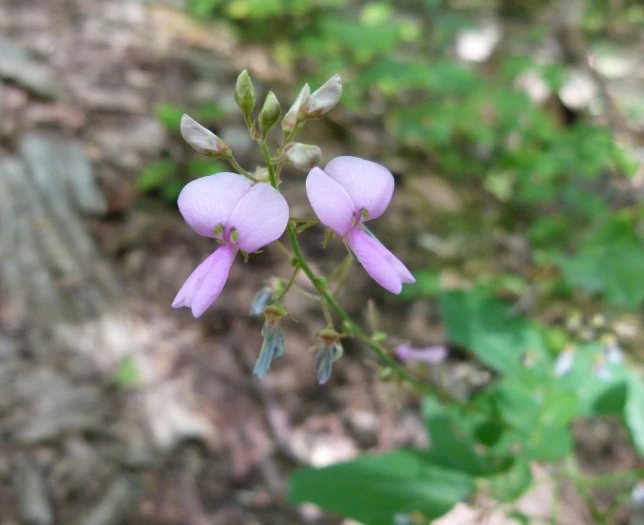Perplexing Ticktrefoil
(Desmodium perplexum)
Perplexing Ticktrefoil (Desmodium perplexum)
/
/

© botanygirl
CC BY 4.0
Image By:
© botanygirl
Recorded By:
Copyright:
CC BY 4.0
Copyright Notice:
Photo by: © botanygirl | License Type: CC BY 4.0 | License URL: http://creativecommons.org/licenses/by/4.0/ | Uploader: botanygirl | Publisher: iNaturalist |

























Estimated Native Range
Climate Requirements
| • Precipitation | 15" - 132" |
| • High Temp. | 67°F - 96°F |
| • Low Temp. | 4°F - 69°F |
Summary
Desmodium perplexum, also known as Perplexing Ticktrefoil, is a herbaceous perennial native to the understory of deciduous forests and the edges of woodlands in eastern North America. It typically grows to a height of 2-4 feet (0.6-1.2 meters) with a similar spread. The plant features trifoliate leaves, which are composed of three leaflets, and produces small, showy pink or purple flowers during the late summer months. The flowers give way to loments, which are segmented seed pods that break into single-seeded units, aiding in seed dispersal.
Perplexing Ticktrefoil is valued for its ability to thrive in moist, shaded conditions, making it suitable for woodland gardens, naturalized areas, and shaded borders. It is a low-maintenance plant that prefers rich, well-drained soils and can tolerate short periods of drought once established. In cultivation, it requires minimal care, making it an attractive option for gardeners seeking to add native flora to their landscapes. However, it can be susceptible to foliar diseases in overly humid conditions. The plant is also a natural host for Alstroemeria mosaic potyvirus, which is of particular interest to researchers studying plant-virus interactions.CC BY-SA 4.0
Perplexing Ticktrefoil is valued for its ability to thrive in moist, shaded conditions, making it suitable for woodland gardens, naturalized areas, and shaded borders. It is a low-maintenance plant that prefers rich, well-drained soils and can tolerate short periods of drought once established. In cultivation, it requires minimal care, making it an attractive option for gardeners seeking to add native flora to their landscapes. However, it can be susceptible to foliar diseases in overly humid conditions. The plant is also a natural host for Alstroemeria mosaic potyvirus, which is of particular interest to researchers studying plant-virus interactions.CC BY-SA 4.0
Plant Description
- Plant Type: Herb
- Height: 2-3.9 feet
- Width: 2-3 feet
- Growth Rate: Rapid
- Flower Color: Pink, Purple, White
- Flowering Season: Summer, Fall
- Leaf Retention: Deciduous
Growth Requirements
- Sun: Full Sun, Part Shade
- Water: Medium
- Drainage: Fast, Medium, Slow
Common Uses
Butterfly Garden, Groundcover, Low Maintenance
Natural Habitat
Understory of deciduous forests and woodland edges in eastern North America
Other Names
Common Names: Bristly Ticktrefoil, Tick-Clover
Scientific Names: Desmodium perplexum, Desmodium boottii, Desmodium dillenii, Desmodium paniculatum var. dillenii, Hedysarum boottii, Meibomia boottii, Meibomia dillenii, Pleurolobus dillenii
GBIF Accepted Name: Desmodium perplexum